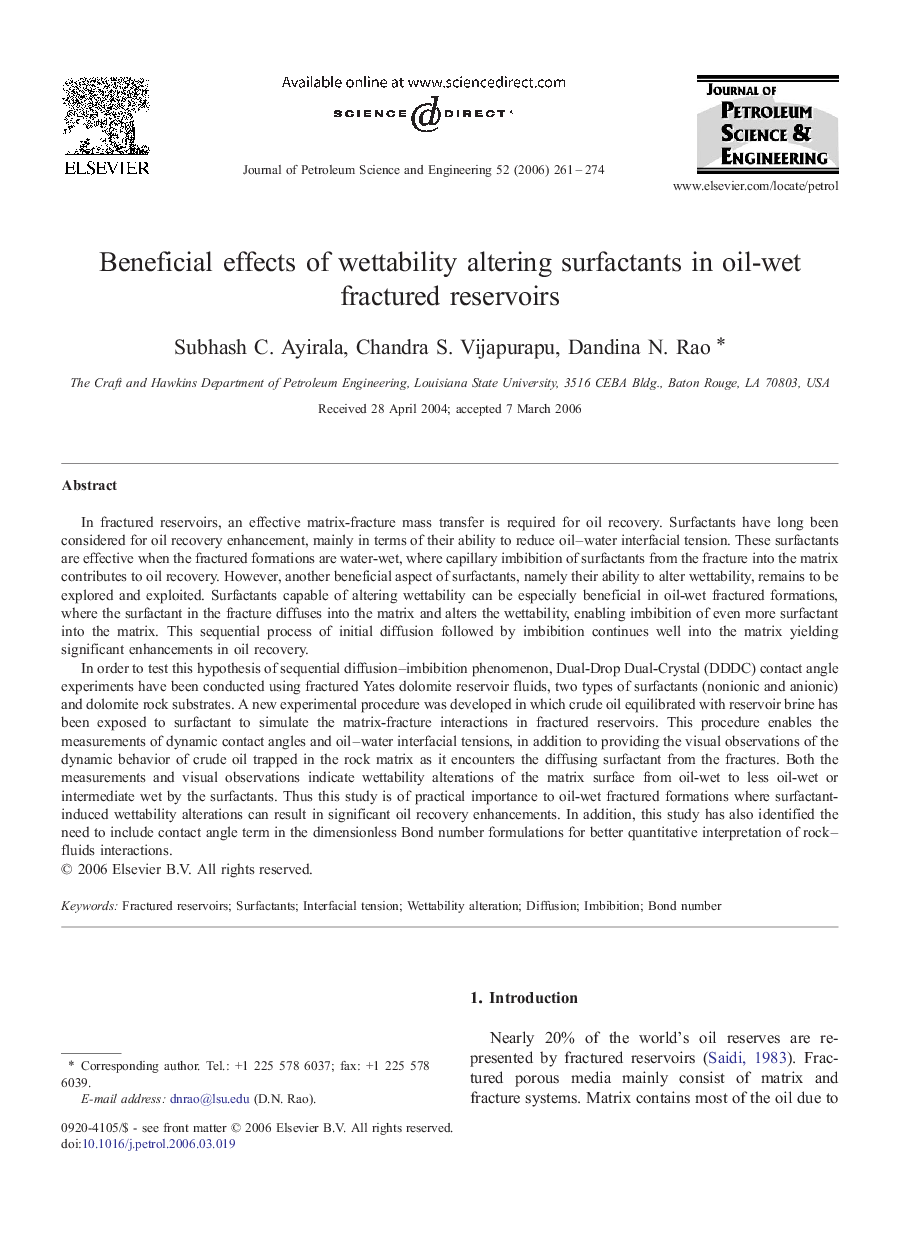| کد مقاله | کد نشریه | سال انتشار | مقاله انگلیسی | نسخه تمام متن |
|---|---|---|---|---|
| 1756476 | 1522900 | 2006 | 14 صفحه PDF | دانلود رایگان |

In fractured reservoirs, an effective matrix-fracture mass transfer is required for oil recovery. Surfactants have long been considered for oil recovery enhancement, mainly in terms of their ability to reduce oil–water interfacial tension. These surfactants are effective when the fractured formations are water-wet, where capillary imbibition of surfactants from the fracture into the matrix contributes to oil recovery. However, another beneficial aspect of surfactants, namely their ability to alter wettability, remains to be explored and exploited. Surfactants capable of altering wettability can be especially beneficial in oil-wet fractured formations, where the surfactant in the fracture diffuses into the matrix and alters the wettability, enabling imbibition of even more surfactant into the matrix. This sequential process of initial diffusion followed by imbibition continues well into the matrix yielding significant enhancements in oil recovery.In order to test this hypothesis of sequential diffusion–imbibition phenomenon, Dual-Drop Dual-Crystal (DDDC) contact angle experiments have been conducted using fractured Yates dolomite reservoir fluids, two types of surfactants (nonionic and anionic) and dolomite rock substrates. A new experimental procedure was developed in which crude oil equilibrated with reservoir brine has been exposed to surfactant to simulate the matrix-fracture interactions in fractured reservoirs. This procedure enables the measurements of dynamic contact angles and oil–water interfacial tensions, in addition to providing the visual observations of the dynamic behavior of crude oil trapped in the rock matrix as it encounters the diffusing surfactant from the fractures. Both the measurements and visual observations indicate wettability alterations of the matrix surface from oil-wet to less oil-wet or intermediate wet by the surfactants. Thus this study is of practical importance to oil-wet fractured formations where surfactant-induced wettability alterations can result in significant oil recovery enhancements. In addition, this study has also identified the need to include contact angle term in the dimensionless Bond number formulations for better quantitative interpretation of rock–fluids interactions.
Journal: Journal of Petroleum Science and Engineering - Volume 52, Issues 1–4, June 2006, Pages 261–274